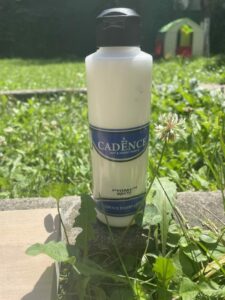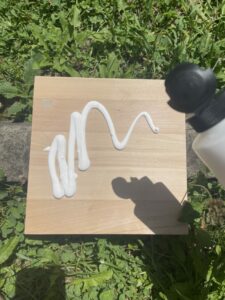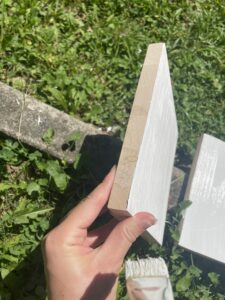This post explains what gesso does and why you need to use it.
Gesso: What It Is
Gesso is a primer or preparatory material that artists use to prepare various surfaces for painting. It’s typically a mixture of a binder and a white pigment, although colored gessos are also available. Gesso creates a smooth, consistent, and stable surface that enhances the adhesion of paint and other artistic materials. Here are the key components and characteristics of gesso:
Gesso serves as a fundamental preparatory layer for painting, offering a range of benefits that enhance the overall quality and longevity of the artwork. Here are some reasons why artists use gesso when painting:
Surface Preparation
Gesso provides a consistent, smooth, and stable surface on various substrates like canvas, wood panels, or paper. This prepared surface ensures that the paint adheres well and doesn’t soak into the substrate unevenly, which can affect the colors and textures of the final artwork.
Preventing Absorption
Raw canvas, wood, or paper can be porous and absorbent, causing the paint to sink in and lose vibrancy. Gesso acts as a barrier, preventing the paint from soaking into the surface and allowing the pigments to retain their brilliance.
Durability and Longevity
Gesso helps protect the underlying surface from the potentially damaging effects of the paint, including chemicals in the paint that might deteriorate the substrate over time. This protection can extend the lifespan of the artwork.
Color Consistency
Applying gesso creates a uniform white or neutral-colored base that ensures the true colors of the paint are accurately represented. This is especially important when using transparent or semi-transparent pigments that can be influenced by the surface beneath them.
Texture Control
Artists can manipulate the texture of the gesso layer by applying it smoothly or leaving brush marks or other textures. This texture can influence the way subsequent layers of paint interact with the surface, adding depth and dimension to the artwork.
Versatility
Gesso is compatible with a variety of painting mediums, including acrylics, oils, and even some water-based media. This makes it a versatile choice for artists working in different styles and with different materials.
Support for Mixed Media
Gesso provides a suitable base for incorporating other materials like collage elements, pastels, or inks alongside traditional paints.
Correction and Adjustments
Gesso allows artists to make corrections or adjustments to their work. If a mistake is made, it’s easier to correct on a gessoed surface than on the raw substrate.
Archival Quality
Gesso is formulated to be stable and durable over time, which is crucial for creating artworks with archival quality. It helps prevent the paint from deteriorating the substrate and ensures the artwork maintains its integrity for years to come.
Professional Presentation
A gessoed surface looks polished and finished, enhancing the overall presentation of the artwork. It also provides a consistent background that can make the artwork more visually appealing.
In summary, gesso is an essential tool in an artist’s toolkit. It prepares the surface, enhances paint adhesion, preserves the colors’ vibrancy, and offers a layer of protection—all of which contribute to creating high-quality and enduring paintings.


